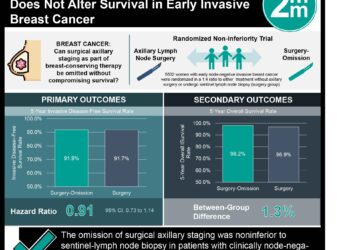Immunotoxin reduces adverse effects of conditioning for stem cell transplantation [PreClinical]
1. An immunotoxin was developed as a conditioning method in mice, which depleted host hematopoietic stem cells (HSCs) and allowed for successful transplantation of donor HSCs while minimizing off-target toxicity.
2. In a mouse model of sickle cell disease (SCD), conditioning with the immunotoxin prior to HSC engraftment resulted in complete disease correction.
Evidence Rating Level: 1 (Excellent)
Study Rundown: Though HSC transplantation (HSCT) holds great promise as a curative therapy for blood disorders like SCD, current conditioning regimes used to deplete host HSCs often cause long-term adverse side effects. In this work, the authors developed a targeted antibody-toxin therapeutic that effectively enabled engraftment of donor HSCs and minimized toxicity as compared to conventional conditioning techniques.
The authors developed a conjugate treatment consisting of an antibody specific for the HSC surface marker CD45 and the toxin saporin (SAP). This CD45-SAP treatment was delivered in a single dose to fully immunocompetent mice before transplantation with donor HSCs. When compared to the mice conditioned with traditional total body irradiation (TBI), CD45-SAP-treated mice showed similar levels of donor cell engraftment four months after HSCT. The CD45-SAP-treated cohort also displayed improved bone marrow vascular integrity and maintenance of thymic function. In a genetic model of SCD, conditioning with CD45-SAP before HSCT led to SCD reversal as measured by the number and morphology of red blood cells as well as hemoglobin, hematocrit, and reticulocyte levels.
Though future studies to determine the efficacy of CD45-SAP against human HSCs are necessary, this work provides strong evidence that targeted, antibody-based immunotoxin treatments can be as effective in conditioning as conventional methods without generating off-target effects. Because the experiments in this study were conducted using autologous cells, additional tests will also need to address the applicability of CD45-SAP to allogeneic transplantations.
Click to read the study in Nature Biotechnology
Relevant Reading: Long-term results of related myeloablative stem-cell transplantation to cure sickle cell disease
In-Depth [animal study]: Immunocompetent C57BL/6 mice were treated with a single intravenous injection of 3 mg/kg CD45-SAP, a dose that effectively reduced HSC numbers when evaluated 8 days after treatment. To determine whether CD45-SAP treatment allowed for successful engraftment, mice (n = 5/time point) were conditioned with CD45-SAP and received HSCTs (10e6 cells/animal) 2-12 days after treatment. Four months after HSCT, comparable levels of donor cells (75-90% of total) were found in the populations of HSCs of the peripheral blood and the bone marrow regardless of transplant timing. Importantly, levels of engrafted donor cells were also similar between CD45-SAP-treated mice and mice conditioned with 5Gy TBI.
Cytotoxic effects of CD45-SAP on the bone vasculature were evaluated 2 days after conditioning via intravenous injection of fluorescently labeled dextran. While irradiation caused extensive dextran diffusion out of vessels, CD45-SAP treatment maintained vascular integrity to a level similar to that of wild-type mice. To evaluate the impact of CD45-SAP on adaptive immunity, thymi from CD45-SAP and TBI conditioned mice were collected. CD45-SAP treated mice had significantly less thymic mass loss (50% versus 80% loss), higher cellularity, and a greater number of T-cell receptor excision circles (TRECs) that indicated the presence of new T cells (p<0.001).
Finally, CD45-SAP conditioning was tested in mice expressing the sickle form of hemoglobin. In animals that received a 4 mg/kg dose of CD45-SAP 3 days before HSCT, all levels of red blood cells, hemoglobin, hematocrit, and reticulocytes significantly improved to wild-type levels 4 months after HSCT. Peripheral blood smears from these mice showed a loss of sickle-shape red blood cells, and Western Blot analysis of whole blood samples demonstrated the complete loss of the sickle hemoglobin protein and regain of normal hemoglobin protein.
Image: PD
©2016 2 Minute Medicine, Inc. All rights reserved. No works may be reproduced without expressed written consent from 2 Minute Medicine, Inc. Inquire about licensing here. No article should be construed as medical advice and is not intended as such by the authors or by 2 Minute Medicine, Inc.






